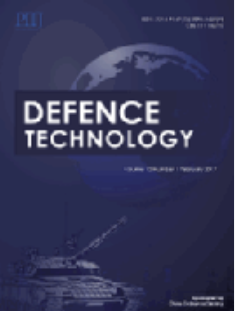Comparison of iron aluminide Fe3Al with armour steel in ballistic behaviour
IF 5
Q1 ENGINEERING, MULTIDISCIPLINARY
引用次数: 0
Abstract
Intermetallic aluminide compounds possess several potential advantages compared to alloyed steels, like enhanced oxidation resistance, lower density and the omittance of critical raw materials. Iron aluminides, compared to other transition metal–aluminides of TM3-Al type, although having a higher density compared to titan-aluminides, have a lower density compared to nickel-aluminides, but also a higher ductility than both alternatives, making this material potentially effective in ballistic protection application. Density–wise, this material may be a worthy alternative to armour steels, which was the aim of this study. Two materials, Fe3Al intermetallic compound (F3A-C) and Armox 500 armour steel were ballistically tested against tungsten-carbide (WC) armour-piercing ammunition, in accordance with STANAG 4569. After ballistic testing, microhardness and metallographic testing were performed, revealing differences in strain hardening, crack propagation mode and exit hole morphology. F3A-C ballistic resistance is similar to that of armour steel, in spite of the lower tensile and impact mechanical properties, relying on a considerably higher strain hardening rate, thermal properties and a lower density.
铁铝化Fe3Al与装甲钢的弹道性能比较
与合金钢相比,金属间铝化物化合物具有几个潜在的优点,如增强的抗氧化性,较低的密度和关键原材料的耐蚀性。与其他TM3-Al型过渡金属铝化物相比,铁铝化物虽然密度高于钛铝化物,但密度低于镍铝化物,但具有更高的延展性,这使得该材料在弹道防护方面具有潜在的有效应用。密度方面,这种材料可能是一个有价值的替代装甲钢,这是本研究的目的。两种材料,Fe3Al金属间化合物(F3A-C)和Armox 500装甲钢对碳化钨(WC)穿甲弹进行弹道测试,符合STANAG 4569标准。弹道试验后,进行显微硬度和金相测试,揭示了应变硬化、裂纹扩展模式和出口孔形貌的差异。F3A-C抗弹道性与装甲钢相似,尽管拉伸和冲击机械性能较低,但依赖于相当高的应变硬化率、热性能和较低的密度。
本文章由计算机程序翻译,如有差异,请以英文原文为准。
求助全文
约1分钟内获得全文
求助全文
来源期刊

Defence Technology(防务技术)
Mechanical Engineering, Control and Systems Engineering, Industrial and Manufacturing Engineering
CiteScore
8.70
自引率
0.00%
发文量
728
审稿时长
25 days
期刊介绍:
Defence Technology, a peer reviewed journal, is published monthly and aims to become the best international academic exchange platform for the research related to defence technology. It publishes original research papers having direct bearing on defence, with a balanced coverage on analytical, experimental, numerical simulation and applied investigations. It covers various disciplines of science, technology and engineering.
 求助内容:
求助内容: 应助结果提醒方式:
应助结果提醒方式:


